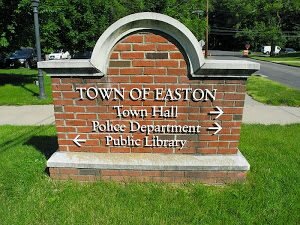 Easton’s Planning and Zoning Commission is almost ready to send out an updated draft of its 2018 Plan for Conservation and Development to other town agencies to be reviewed.
Easton’s Planning and Zoning Commission is almost ready to send out an updated draft of its 2018 Plan for Conservation and Development to other town agencies to be reviewed.
The commission has 65 days until it must send out its draft of the town plan out to the agencies, according to P&Z Chair Robert Murat.
The commission said it plans to send out the updated draft by Friday, July 27, and have decided on Oct. 1 as the prospective date for the next public hearing discussion for the town plan.
Murat said the Oct. 1 session would consist mainly of dialogue from the commission.
The P&Z Commission most recently gathered for a special meeting on Thursday, July 12, to review the comments made by the public at its June 20 meeting that took place at Helen Keller Middle School. Murat said the June 20 meeting was to help get residents familiar with the town plan, make comments and ask questions.
After receiving insight from a number of residents, Murat and the commission agreed that finalizing this town document, which is to be updated every decade, will require a bit more work.
“This process is not over by any means, but more so just a continuation of what we started over the past few years,” said Murat.
In an effort to expedite the process of finalizing this document, the commission agreed to make minimal changes to the plan, only altering what had to be addressed.
2018 POCD
The topic of creating a town center was discussed once again. The commission leaned toward using the state’s Village District guidelines as a way to create a small commercial hub near the intersection of Sport Hill, Center and Banks roads, where the Easton Village Store and Silverman’s Farm now are located.
Murat said the village district is a “tool” that could benefit the town and that many residents are attracted to the community because of its “quaint” downtown layout.
P&Z member Ross Ogden disagreed with Murat and described the current layout of town center to be “disorganized.”
An Easton resident, not on the P&Z Commission, posted a video stating that despite some pros that could come along with establishing the Village District guidelines, there would be cons as well. Within the one-minute long video on YouTube, the resident speculates that even if there was an “increase in community” or more shopping locally, the town would still be putting water sources in “danger,” there would more traffic, more pollution, and an increase in commercial developments.
Commissioner Raymond Martin said regardless of the various feelings on creating a village district in town, something needs to change.
“Not a lot of people that come here share our feelings right now,” said Ray. “To do nothing is to give up on Easton and I’m not good with that.”
The commission has been working to collect data from town’s “comparable to Easton” in order to get a better understanding on how the Village Districts impact grand lists, but no specific community was disclosed and no data were presented at the July 12 meeting.
Among the easier decisions for the commission to make, all members unanimously agreed to rename the town’s “Public Green” as the “Fire Company Green.”
Putting everything on the table
While the commissioners looked through the initial draft of the POCD they challenged themselves to think of ways to increase the town’s grand list. One method of increasing the town’s grand list that was suggested by the commissioners was to explore the possible use of the Aquarion water company property and potentially increasing the amount the town taxes the company.
Murat said actually increasing tax on Aquarion wouldn’t meet the POCD guidelines, but asking the company for access to its property is still a possibility.
“We should ask,” said Murat. “What better time than now?”
The commission explained that the POCD strictly pertains to how land within the town is used, but there are other factors that they keep in mind while making changes to the draft.
Also discussed was the amount of agricultural land in Easton, including the number of parcels and acres in the state’s Public Act 490 program that lowers real estate taxes on property used for agriculture, forestry or open space.
The commission questioned whether the map as it currently depicts each parcel of land in town is accurate. The commissioners also agreed that, in the near future, it needs to establish more clear guidelines on what properties qualify for the state program.
“One challenge with updating land use is many properties in town are classified as ‘farms’ and receive exemption,” said” Murat. “Farm designation is almost a default category for land which receives the exemption.”
